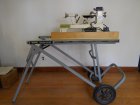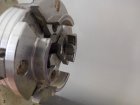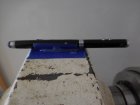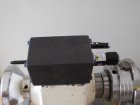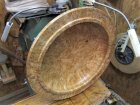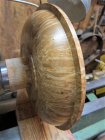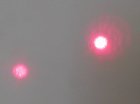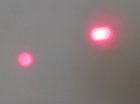Odie,
You will have some difficulties coming up with rules to live by when it comes to vibrations. Vibrations are a direct response to harmonic resonant frequencies that are generated by the design of the machine. This frequency can change based on RPM, weight of the billet, balance of the billet, wear on the drive belt, wear on the drive bearings, mounting of the machine to the floor, wear on drive pulleys, shaft alignments, motor alignments, belt alignments, bent shafts, motor faults, machine mass and weight, structural design of the machine, etc.
Mass and weight is the easiest way to overcome machine vibration, changing the RPM of the machine is the other most commonly used method to control vibration. Each time you install a new billet on the machine you are changing the equation, as the chips come off it will constantly change. If you have a large wood billet with a large dense knot on one side you will never eliminate all of the vibration unless you install a counter balance on the billet similar to mounting a weight on a tire that is out of balance. Each wood billet will be changing the equation as no two pieces of wood are the same. This can be your ZEN moment when you become one with the wood and accept each piece of wood for what it is, nature providing a unique raw art form for all of us to enjoy. Without the knots, voids, colors and grain variations wood would be very boring, have you hugged a tree lately?
You will have some difficulties coming up with rules to live by when it comes to vibrations. Vibrations are a direct response to harmonic resonant frequencies that are generated by the design of the machine. This frequency can change based on RPM, weight of the billet, balance of the billet, wear on the drive belt, wear on the drive bearings, mounting of the machine to the floor, wear on drive pulleys, shaft alignments, motor alignments, belt alignments, bent shafts, motor faults, machine mass and weight, structural design of the machine, etc.
Mass and weight is the easiest way to overcome machine vibration, changing the RPM of the machine is the other most commonly used method to control vibration. Each time you install a new billet on the machine you are changing the equation, as the chips come off it will constantly change. If you have a large wood billet with a large dense knot on one side you will never eliminate all of the vibration unless you install a counter balance on the billet similar to mounting a weight on a tire that is out of balance. Each wood billet will be changing the equation as no two pieces of wood are the same. This can be your ZEN moment when you become one with the wood and accept each piece of wood for what it is, nature providing a unique raw art form for all of us to enjoy. Without the knots, voids, colors and grain variations wood would be very boring, have you hugged a tree lately?

